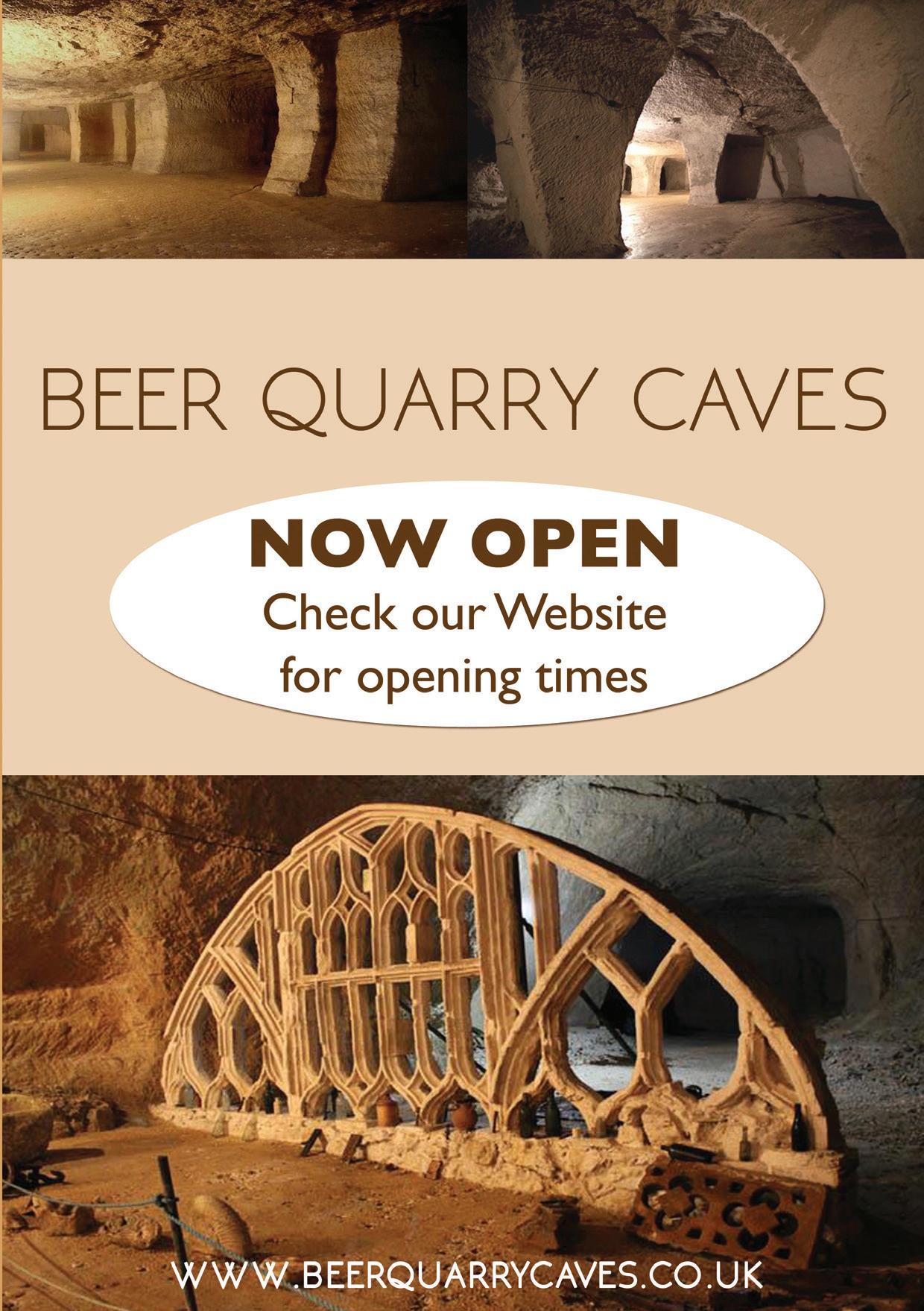
4 minute read
Beer Quarry Caves By Steve Rogers
HISTORY AND REMEMBERING. HOW NOT TO REPEAT THE PAST—AND WHY
History, according to the Italian historian Roberto Calasso, is an enigma. According to the Irish writer James Joyce history is a nightmare from which he wants to wake up. But history, however you find it, is inescapable. Its where we come from. It’s what made us. According to the philosopher George Santayana “Those who do not learn from the past are doomed to repeat it”. This is a warning that Winston Churchill called attention to but it is also an invitation. History is why we invite you come to visit us at Beer Quarry Caves.
Advertisement
Just recently we celebrated the 75th anniversary of Victory in Europe and then Victory over Japan. We heard, again, the terrible catastrophe brought upon Europe by Hitler and the Nazis, with a loss of almost 50 million human lives, most of them Russian but many of them our own during the battles to win back Europe, the blitz in London and in Exeter in 1942. We heard, wonderfully presented by Johanna Lumley, of the suffering in the Japanese prisoner of war camps and then the ultimate horror of the two atomic bombs, killing almost 200,000 people in less than the blink of an eye. As a result of the worst war humankind has ever known, we had found out how to destroy the human race, all of it.
BEER QUARRY CAVES AND THE FUTURE.
On a more optimistic note we reopened the caves on the 4th of July, as permitted by the coronavirus regulations. Even that day we had 3 visitors !! and the numbers have grown nicely since. We are getting help from the British Museum as to how to manage our tours. That marvellous place, the B M, re-opens on the 27th August. Like us they have a relatively narrow entrance, then the Great Court, just like our caverns. They used to get slightly more visitors than us though, about seven million a year. Not quite what we will ever have, but you never know, see below.
BATS AND SPECIAL WINTER TOURS
We will not be locking down this Winter, but with the help and advice of our Devon Bat friends we will be running special tours. We are often asked where our bats are in Summer. They are out, foraging all over Devon, stocking up for Winter. But in Winter they come back home to our caves to hibernate. There has been a huge growth in interest in bats in recent years and the Caves are home to a large colony of common and some rare species of these extraordinary little animals, of which we know far too little.
BARBECUE SPECIAL EVENING TOURS. longer than a normal tour, starting around 17.15 culminating in a ‘round the tables’ barbecue, cooked by our resident chef Alice Rodgers. We hope this will encourage visitors who want to go into the local history more deeply, and the history of the caves a bit more, contributing as well as learning.
Flint. We will also be starting flint knapping and information courses. It is not widely known that the scientists still haven’t quite worked out how flint is formed. Science knows the ingredients but not quite how the cake was baked. Flint, which provided mankind with its sole source of tools for over two million years, was Beer’s first major industry, apart perhaps from fishing. For those in Beer and the local area who have never visited the caves we now have a small but expanding flint collection. We are hoping to start knapping (cutting) sessions in the Autumn, perhaps at weekends. We would welcome expressions of interest via by way of emails to our web site.
BEER QUARRY CAVES AND LOCAL HISTORY. THE LARGER PICTURE. A STONE AGE CITY.
Our knowledge of the remote past is increasing at an amazing rate. Hardly a day goes by without the BBC reporting new finds that tell us more about where we came from and how. In the last few weeks some of the earliest cave ‘etchings’ in Britain have been found on the island of Jersey, a probable route for the post Neanderthal human species, homo sapiens, back to Britain after the last ice age. And a staging post to Devon. There are very similar cave drawings at Creswell Crags in Cheddar Gorge not too far away from us, only discovered in 2003. This is all tending towards a picture of Stone Age Britain that is becoming increasingly complex, and much more informative. But for us at Beer Quarry Caves the real holy grail is to establish more clearly what the great necropolis at Farway was, how it links to Beer Quarry and Beer, and then how it links to Stonehenge. To those of us who grew up thinking that the great stone circle at Stonehenge was just a nice picnic site on the way west, what has been found there is simply staggering. Huge new burial and ritual sites, the source of the standing stones themselves, and all the human habitations that surrounded the area. What we are seeing is how our ancestors organised their first cities. We are reasonably certain that Beer and Farway were also a much larger human community, much more closely linked than seems. And one day we hope to be able to show where East Devon fitted into the history of modern humans in Britain and how they made their first cities.
Stephen Rodgers Curator and manager of Beer Quarry Caves. Member of the Royal Geological Society of Cornwall.










